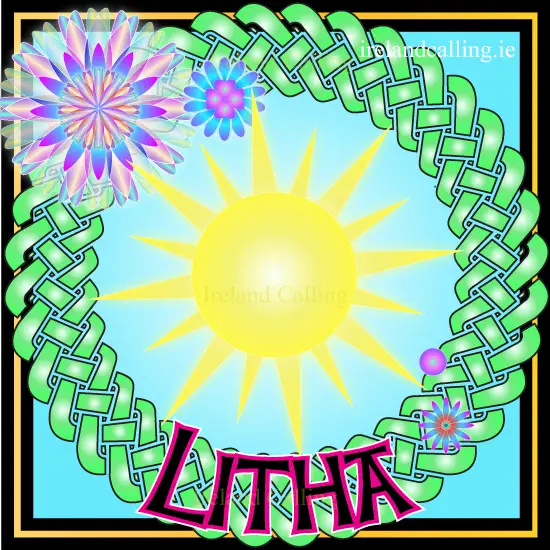Summer Solstice 21st June – Midsummer’s eve, St John’s Night
Litha, meaning light, is a festival dedicated to the life-giving, regenerative powers of the sun. The ancient Irish were celebrating the Summer Solstice thousands of years ago.
In ancient times, people’s survival depended on the cycle of the seasons and nature and there was great belief in ritual to keep those cycles going for healthy crops, cattle and pleasant weather.
Celts also believed in supernatural forces, that evil spirits walked around freely during the summer solstice and could be banished by performing rituals. The warm sun could chase away the darkness.
Beautiful Celtic graphics in our store
The Celtic midsummer festival would involve feasts and dancing as well as rituals of lighting bonfires, usually on hill tops to symbolise the sun being at its highest point, and lighting wheels of fire which were rolled down the hill to symbolise the sun’s eventual decent back into darkness with the nights become longer.
Midsummer was also a time for weddings. Newly-weds were encouraged to jump through the Litha flames to promote a healthy and happy marriage and young women were encouraged to stare into the flames to gain visions of their future husband.
The Druids celebrated the summer solstice as the feast of Alban Heriun, the time when they would celebrate the victory of light over dark and also acknowledge that the nights will get longer bringing the sun and moon together.
In order to integrate into the existing culture, Christians adopted many of these old midsummer traditions and brought them into their belief system.
Midsummer’s eve became St. John’s Night.
Many places in Ireland still celebrate St John’s Night with carnivals, music concerts and fairs. Bonfires are still lit on hilltops. The Irish Environmental Protection Agency actually has an exemption for lighting fires on the summer solstice.
